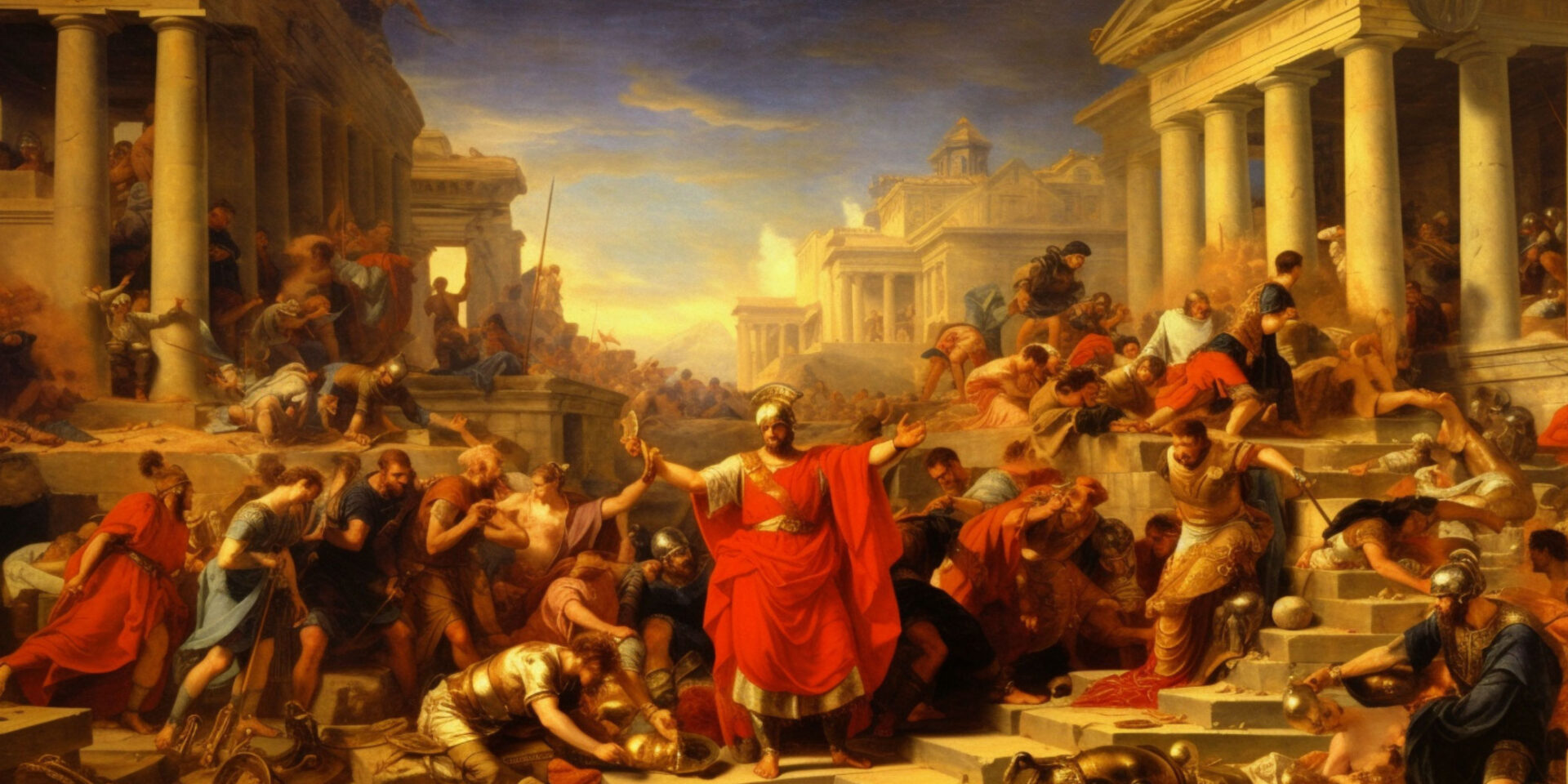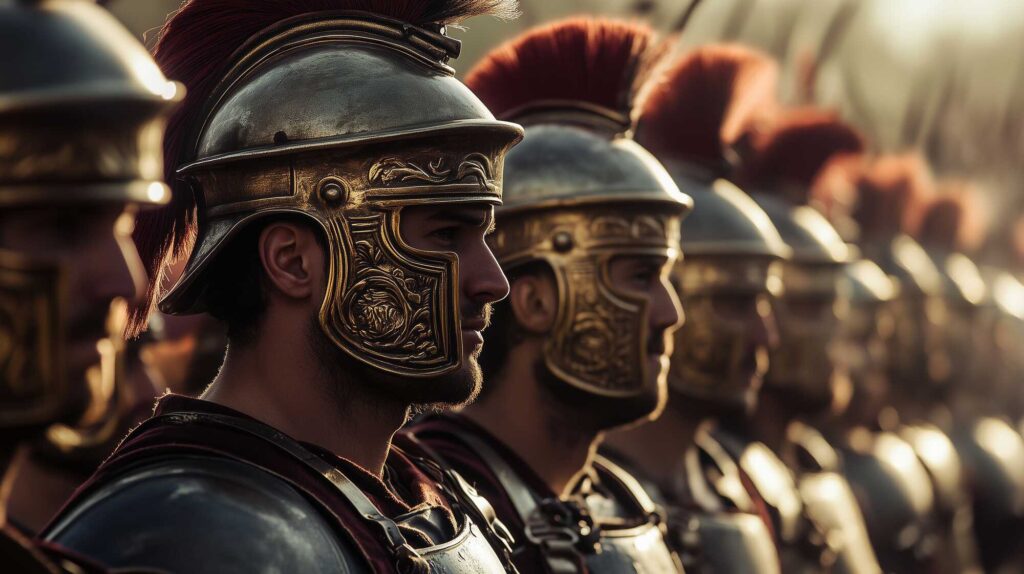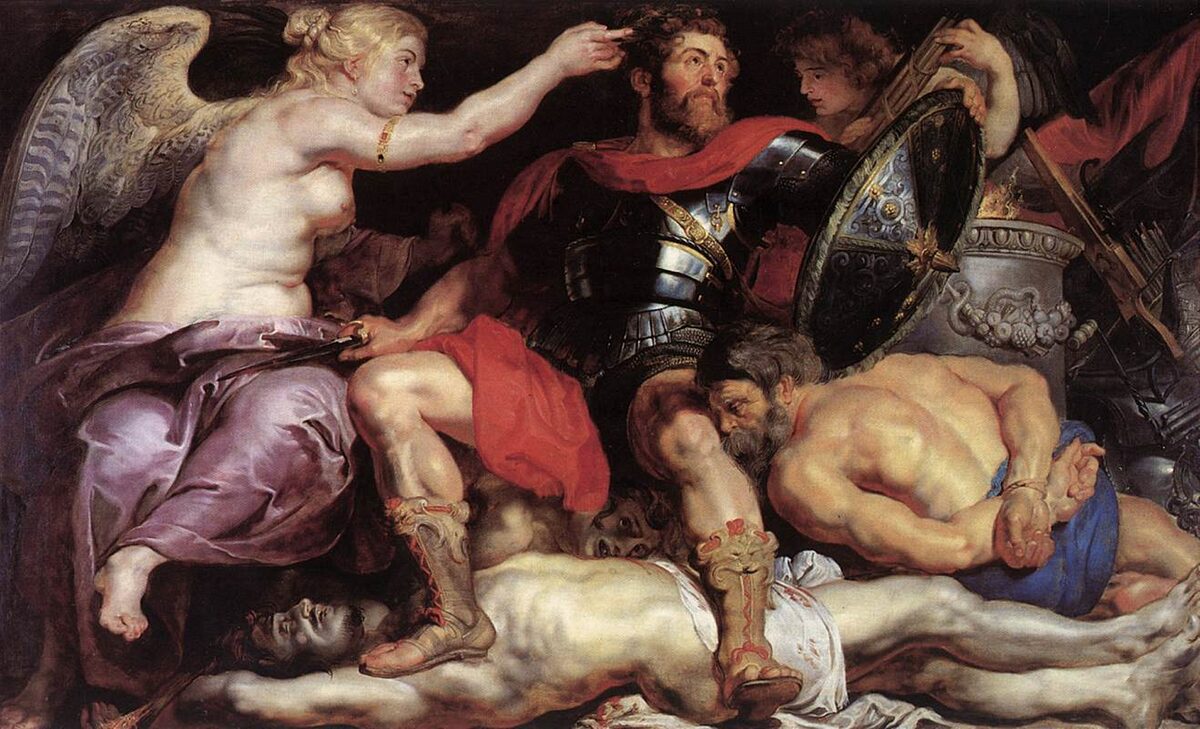The fall of the Roman Empire remains one of history’s most iconic events, marking the end of an era and the beginning of a new one. Only the Western Roman Empire fell in 476 AD, with the Eastern Empire enduring for nearly a thousand more years until it was conquered by the Ottomans in 1453. This article will explore the factors that led to the decline of the once-mighty Western Empire. Rome’s rise from a humble city-state to a sprawling empire was an impressive journey. Yet, internal and external pressures gradually undermined its stability, leading to inevitable collapse.
Key to understanding Rome’s downfall are the shifting dynamics within its military and governance. The empire’s troubles began in the late second century, with economic challenges and changing army compositions. Persistent threats from Germanic tribes and internal strife only exacerbated these problems. Despite temporary efforts at recovery by capable leaders, the Western Roman Empire eventually succumbed to its difficulties, leaving behind a legacy of both caution and fascination for future generations.
Key Takeaways
- The Western Roman Empire fell in 476 AD, but the East continued until 1453.
- Internal strife and external pressures weakened the Western Empire.
- Shifts in military and governance dynamics led to Rome’s decline.
The Downfall of the Roman Empire
The Historical Setting of Its End
The Roman Empire, renowned for its vastness and influence, crumbled under a myriad of pressures towards the end of its existence. Its beginnings as a small city-state, evolving into a republic and eventually an empire under Augustus Caesar in 27 BC, marked an era of development and success. The subsequent period, known as the Pax Romana, saw expansive growth, stable governance, and monumental architectural achievements such as the Colosseum. This era, however, was not everlasting, with cracks beginning to show following the reign of Marcus Aurelius. His passing in 180 AD marked a shift from a time of prosperity to one tangled with internal strife and external challenges. Historical records from that time talk about how Rome transitioned from an age of golden opportunity to a period marred by challenges, including a devastating plague.
Decline of the Western Division
In 476 AD, the Western Roman Empire officially fell. Although the eastern half of the empire, later known as the Byzantine Empire, continued to thrive for almost another millennium, the west faced relentless decline. Despite their unified origin, the two spheres diverged significantly in power and stability. Numerous challenges, including repeated invasions by Germanic tribes, left the Western Empire vulnerable. An initial attempt to maintain control involved incorporating these tribes as allies, yet trust issues and unfulfilled agreements often led to further conflicts. A notable instance was the Battle of Adrianople, where the failure to manage alliances resulted in devastating losses for Rome.
Economic and Military Burdens
The Roman military and economy suffered due to prolonged warfare and mismanagement. The consistent state of civil unrest drained the empire’s resources, while the military’s dependency on Germanic mercenaries shifted its core strength from Roman troops. The economic landscape was further weakened by a diminishing population and reduced agricultural yields. Emperors like Diocletian and Constantine attempted reforms to mitigate these problems, focusing on tightening administrative and economic policies. However, these measures often led to a stagnant economy, burdening citizens with forced labor and increasing military outlays. The province of Africa, a key economic hub, was lost to the Vandals, depriving Rome of crucial resources.
Influence of Christianity on Society
Christianity gradually transformed Roman society, initially facing persecution but eventually gaining acceptance. The shift from the traditional Roman religion towards Christianity under Emperor Constantine reshaped cultural and societal norms. By 313 AD, Christianity was legalized, leading to its growth and establishment as the state religion. This evolution reflected broader changes within the empire, where religious transformation played a significant role in its historical trajectory, influencing both governance and daily life across its territories.
Political Changes and Administrative Strategies
Efforts to stabilize the empire through administrative changes were a hallmark of several emperors during this era. Diocletian’s reforms were designed to distribute administrative responsibilities across multiple regions, aiming to address logistical challenges and external threats. The empire was ultimately divided into distinct eastern and western regions, with local leaders gaining limited autonomy. However, these measures were not enough to secure the Western Empire’s endurance. Disputes among military leaders, along with corruption and ineffective governance, further undermined stability, leading to the eventual downfall.
Rising Challenges and Inner Turmoil

The Turmoil of the Third Century
A period of great difficulty emerged starting in 235 AD, known as the Third-Century Crisis. The Roman Empire experienced relentless civil conflict, economic troubles, and external threats. Turbulence marked this era as rapid changes in leadership created instability. Military struggles and invasions placed immense stress on resources, while frequent changes in emperors disrupted governance, leading to financial breakdown and intensified barbarian raids. Some leaders managed to restore certain stability by 284 AD through strong leadership and restructuring in governance.
Separation of the Empire
The immense size and diversity of the Empire demanded new solutions to its management challenges. In response to internal pressures and divisions, a significant shift occurred with the partitioning of power. Starting with the time of Diocletian, the Empire divided into different administrative regions. This reorganization culminated in 395 AD with the official division into the Eastern and Western Roman Empires. The East secured the majority of economic resources and population centers, leaving the West struggling significantly, further worsening internal collapse.
Germanic Pressures and Social Instability
Germanic tribes posed ongoing challenges to Roman borders as they pressed southward and eastward due to multiple factors like population growth and climate change. By 370 AD, the movement intensified with Hun invasions disrupting the existing balance. Agreements like the settlement of Goths within the Empire failed to stabilize these pressures. The Western Empire faced massive setbacks such as the defeat at Adrianople in 378 AD, leading to continued military weakness. Following these events, the Germanic tribes, now skilled in Roman warfare techniques, initiated significant conquests within the Empire, adding to the turmoil and breakdown of Western Rome.
The Evolving Composition of the Roman Army
Hired Soldiers and Northern Leaders
In the later years of the Roman Empire, especially in the West, the army underwent significant changes. Originally composed of highly trained Roman soldiers, the military began to include more foreign mercenaries. These hired soldiers were often of Germanic origin and rose to prominent leadership positions within the army. Officers like Stilicho held remarkable influence and sometimes played pivotal roles in the politics of the Empire. Although some served Rome loyally, others pursued their own interests, impacting the Empire’s stability.

Effects of Germanic Inclusion
The inclusion of Germanic groups transformed both the military and political landscapes of the Western Roman Empire. Initially, tribes such as the Goths entered agreements with the Romans, settling within the Empire in exchange for military service. Over time, these groups wielded considerable power and influence, often leading to the establishment of their own territories within the Empire’s borders. This shift marked a significant change as these groups, once allied with Rome, began to assert their independence, contributing to the Empire’s fragmentation and eventual decline. Such dynamics ultimately reshaped the Western Roman Empire and its ability to maintain control over its vast territories.
Significant Incidents and Conflicts
Clash at Adrianople and Its Consequences
The Battle of Adrianople in 378 was a turning point in Roman history. Emperor Valens, eager for victory, faced off against the Goths but ended in a devastating defeat. This loss substantially weakened both the Eastern and Western parts of the Roman Empire. The Gothic forces, having broken their agreement with the Romans, showcased their strength and exposed vulnerabilities within the empire. This defeat marked the beginning of repeated barbarian incursions that battered the Western Roman Empire.
Fall of Rome and Territorial Losses
In 410, the city of Rome faced its first sack in almost 800 years, carried out by the Visigoths, led by a former Roman ally. This shocking event symbolized the decline of Roman power and was a result of the empire’s inability to repel Germanic tribes. As barbarians crossed borders into Roman territories, regions like Gaul and Hispania saw changes, and the province of Britain was abandoned due to internal strife. The loss of strategic lands, including the critical African province to the Vandals, further strained Rome’s resources and defensive capabilities.
Overcoming Attila and the Hunnic Threat
Despite their challenges, the Romans achieved a noteworthy victory against Attila the Hun in 451. This battle saw a rare alliance between Roman and Germanic forces, demonstrating a united front against a common threat. Although this victory didn’t stop the overall decline, it highlighted the ability of coalition forces to stand against formidable enemies. The defeat of the Huns provided a temporary respite from the relentless pressure of invasions but could not reverse the ongoing fragmentation of the Western Roman Empire.
A Ray of Hope and the Final Downfall
Changes and Work by Emperor Majorian

Majorian, viewed by many as the greatest Western Roman Emperor, made significant attempts to restore the Empire. He came into power during a time of great turmoil and decline. Seeing the dire need for reform, he focused on rebuilding the military and strengthening defenses. His efforts included reorganizing the army to better protect against invasions and improving the empire’s infrastructure. Majorian tried to win back regions lost to barbarian forces and worked tirelessly to secure the empire’s future.
The Vandal Takeover and Its Effects
The Vandal conquest had a profound impact on the Western Roman Empire. The Vandals, a Germanic tribe, crossed into North Africa and captured key territories. This resulted in the loss of critical provinces that were vital for the empire’s food supply and financial resources. In 455, the Vandals even managed to sack Rome itself, demonstrating the empire’s weakened state. Their conquest left the Western Roman Empire in a vulnerable position, hastening its decline and eventual fall.
Final Thoughts
The Roman Empire’s journey from a small city-state to an extensive empire is a tale of greatness and eventual downfall. It enjoyed a long period of stability known as the Pax Romana. This era brought immense prosperity and remarkable architectural achievements. Yet, despite its successes, the western part of the empire faced numerous challenges that led to its decline.
The shift in power dynamics, internal conflicts, and external pressures contributed to the fall. A significant moment was the Crisis of the Third Century, which saw continuous civil unrest and economic woes. This turbulent period ended with reforms that provided temporary stability. However, these changes also stiffened economic progress and reduced agricultural productivity.
The Western Empire’s struggles were compounded by the rise of Germanic tribes from the north. These groups, driven by various factors, pressed against Rome’s borders. They gained the skills of sieges and warfare, leading to pivotal moments such as the sack of Rome in 410. The reliance on Germanic mercenaries in the military further weakened the western defenses.
The Eastern Roman Empire held its ground, benefiting from better resources and administration. Meanwhile, the Western Roman Empire faced insurmountable odds. Attempts to stem the decline were made, but the challenges proved too great. With these obstacles, the possibilities for the empire’s endurance were severely limited, marking the end of Rome’s Western legacy.
